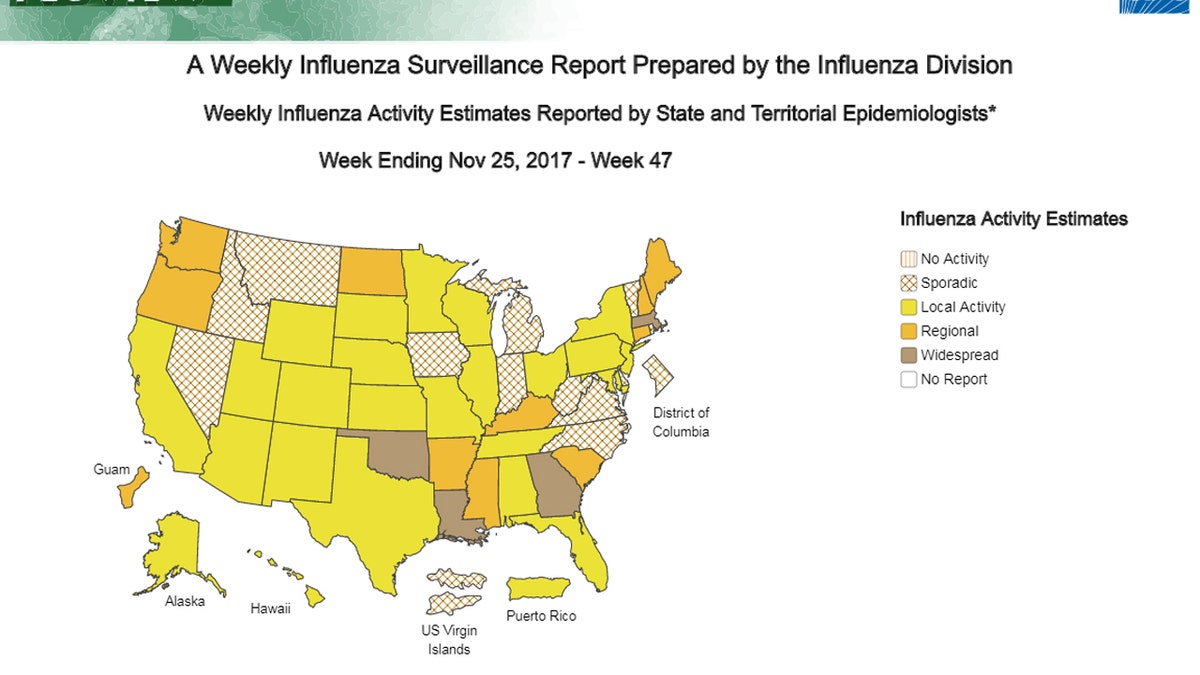
Health officials warn of bad flu season this year, but still recommend the flu shot. (The Associated Press)
More than 7,000 cases of influenza have been confirmed in the U.S. so far this flu season -- more than double the number this time last year, CBS News reported, citing data frm the Centers for Disease Control and Prevention.
Most vulnerable to serious flu complications are older adults, very young children, pregnant women and people with certain long-term health conditions, the Chicago Tribune reported.
The latest death attributed to the flu was a woman from Arizona. Her case increased the influenza death toll to eight adults nationwide.
This season so far, Oklahoma has seen two fatalities from influenza, while five deaths related to the flu were reported in North Carolina.
Ninety percent of U.S. states report some type of local, regional or widespread flu activity, the Chicago Tribune reported, citing the CDC.

The flu is now widespread in four states: Georgia, Oklahoma, Louisiana and Massachusetts, according to the CDC report.
Mary Anderson, manager of infection control at Edward Hospital in Naperville, Ill., told the Chicago Tribune that the flu is more serious than the common cold, and this year's H3N2 virus is cause for concern.
"Those strains hit hardest among the very young and very old," Anderson said.
Vaccinations can decrease the chance of spreading the virus to at-risk populations, Anderson said.
However, the flu vaccine was reported to be only 10 percent effective against the H3N2 strain, according to USA Today, citing the public health journal Eurosurveillance.
Martin Hirsch, an infectious disease physician at Massachusetts General Hospital and editor-in-chief of the Journal of Infectious Diseases, told USA Today that while 10 percent seems low, “flu vaccines are usually only about 40 percent to 60 percent effective in the best of years.”
“Even if the vaccine is only 10 percent effective against H3N2, the vaccine does protect against other strains that are circulating,” he said. “The most important thing is still to get your flu vaccine.”
Each year since 2010, the flu virus has caused between 9.2 million and 35.6 million illnesses in the U.S., the CDC said. Those cases resulted in between 140,000 and 710,000 hospitalizations, and between 12,000 and 56,000 deaths each year.
The flu shot is the first line of defense, but people could also use a few simple preventative measures to prevent the spread of germs, the Chicago Tribune reported.
"Wash your hands frequently, cover your mouth when you cough, and stay home when you're sick," Anderson told the Chicago Tribune.




















